Every year at this time I add a new item to my list of what to watch for in the night sky. Oddly enough, it’s clouds. I must be nuts, right? What astronomer needs more clouds? But these are different. Called noctilucent clouds (NLCs), these skittish objects are visible now and again low in the northern sky during morning and evening twilight. Late May through August is the best time to see them.
What are these wispy, sometimes eerie clouds? And how can you see them?
First a caveat. If you live in Mississippi your chances of spotting them are slimmer than a string bean. Uncommon to begin with, NLCs are typically visible at higher latitudes; the northern U.S., Canada and Europe are prime outposts for an NLC vigil.
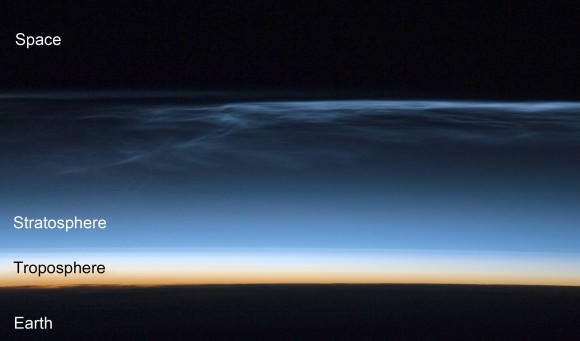
NLCs hole up in Earth’s mesosphere, a rarefied blanket of air extending from 30 to 53 miles (48-85 km) high. Most of the meteors we see burn up in this layer. It’s also extremely cold up there with temperatures at the top dropping to a teeth-rattling -130 F (-90 C). Because of their great height, noctilucent clouds reflect sunlight long after sunset when other clouds have gone gray and colorless. Their color is imparted by the ozone layer located 12-19 miles (19-30 km) overhead. The reds and oranges of reflected sunlight are absorbed by ozone on their way down to our eyes, tinting the clouds blue.
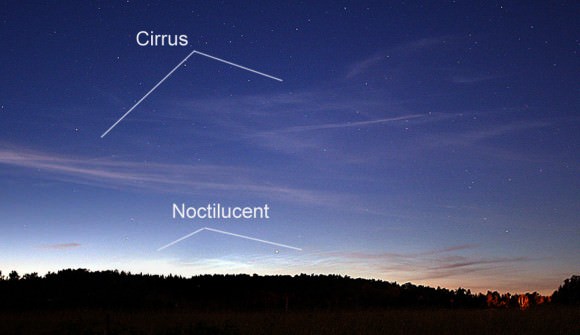
For any cloud to take shape and grow, water needs to stick to something. In day-to-day clouds, dust from wind storms – especially from the world’s deserts – supplies the necessary “nuclei” for the formation of water droplets and ice crystals.
Cirrus clouds, the ones that look like feathers wafting across the daytime sky, are typically about 10 miles high. Composed of ice crystals, they float near the top of the lowest, thickest layer of air called the troposphere. Noctilucent clouds share the realm of the Greek gods, basking in sunlight well into the night at an altitude of some 50 miles. That’s nearly as high as the aurora borealis, which can shimmy down to a scant 60 miles.
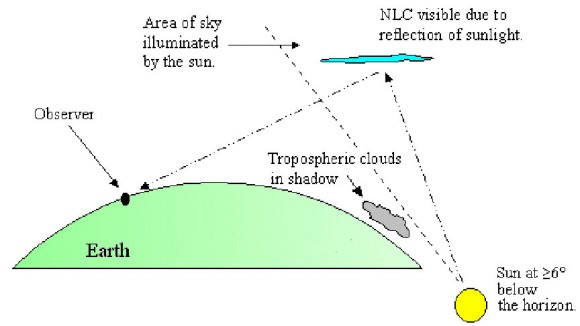
Since it’s next to impossible to get dust up high enough to provide nuclei for noctilucent cloud formation, scientists suspect outer space dust from meteoroids and comets provide some of the necessary material. As Earth travels around the sun, it sweeps up some 40,000 tons of interplanetary dust a year, plenty to get the job done. Other sources include volcanic dust and even chemical residues from rocket exhaust from the once-frequent launches of the space shuttle.
Winds from summer storms carry the water vapor into the mesosphere from the lower atmosphere which condenses on terrestrial and extraterrestrial dust nuclei. That’s why NLC displays are most frequent in summer.
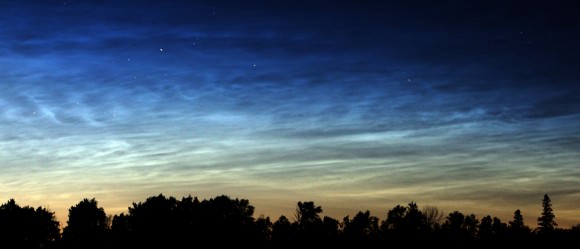
Here in Duluth, Minn. at 47 degrees north I’ve seen probably half a dozen displays in years of sky watching, but to be honest, I only started looking for them in a dedicated way in the last 5 years. As late May approaches and twilight stretches deep into the evening hours, I scan the sky hoping for their return. The key to spotting NLCs is to find a place with a wide-open view of the northern horizon.
In the north, the sun retires around 9 p.m. and twilight ends more than two hours later. Watch for NLCs starting about an hour after sunset when cirrus clouds have turned pale gray and the stars begin to come out. From my home, they typically hover between 5 and 10 degrees (about a fist held at arm’s length or less) high above the northern horizon. The clouds make their first appearance at the upper end of that range, but as dusk deepens, they shrink back toward the horizon.
Video of NLCs from the Science Photo Library
NLCs look WEIRD. It’s not only their telltale eerie, plasma-blue coloration but their form that gives them away. Stripes, undulations, curls, streaks are mixed together in a way that seems alien. You might expect these on Mars maybe, but Earth? Binoculars are a huge help in appreciating the clouds’ peculiar textures and color. I say this because I’ve forgotten mine on several occasions. Two other dead giveaways – NLCs will grow brighter for a time as the sky grows darker. Regular clouds behave the opposite. NLCs also move and change shape very slowly because they’re so high up and far away.
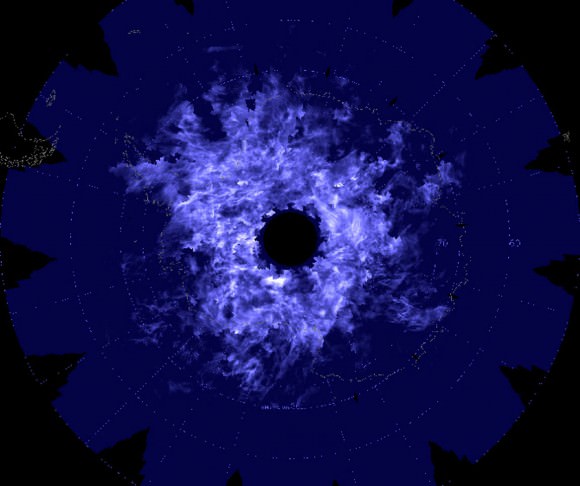
Night-shining clouds remain aglow until nearly twilight’s end. The cut-off viewing time for the northern U.S. is about 2 hours after sunset or earlier if the mosquitos have their way. By then the sun drops too far below the horizon to provide the light to sustain them. Those living farther north in Canada, northern Ireland, England and Finland, where the sky is never truly dark during the early summer months, can enjoy NLC viewing all night.
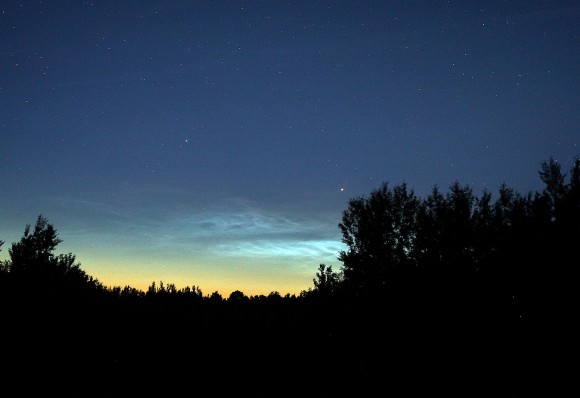
There are indications that NLC displays are becoming more common, even pushing into lower latitudes in the past 20-30 years. It might have to do with increased levels of carbon dioxide in Earth’s atmosphere. While CO2 helps to warm the lower air layers, it can can cause the upper atmosphere to grow chillier, creating the cold conditions necessary for accelerated noctilucent cloud formation. You can dig deeper into the topic HERE.
For more about Earth’s most unusual clouds, stop by the Noctilucent Cloud Observers’ Homepage. Like the northern lights, a thrilling noctilucent cloud display is a quest worth a trip to the north country.

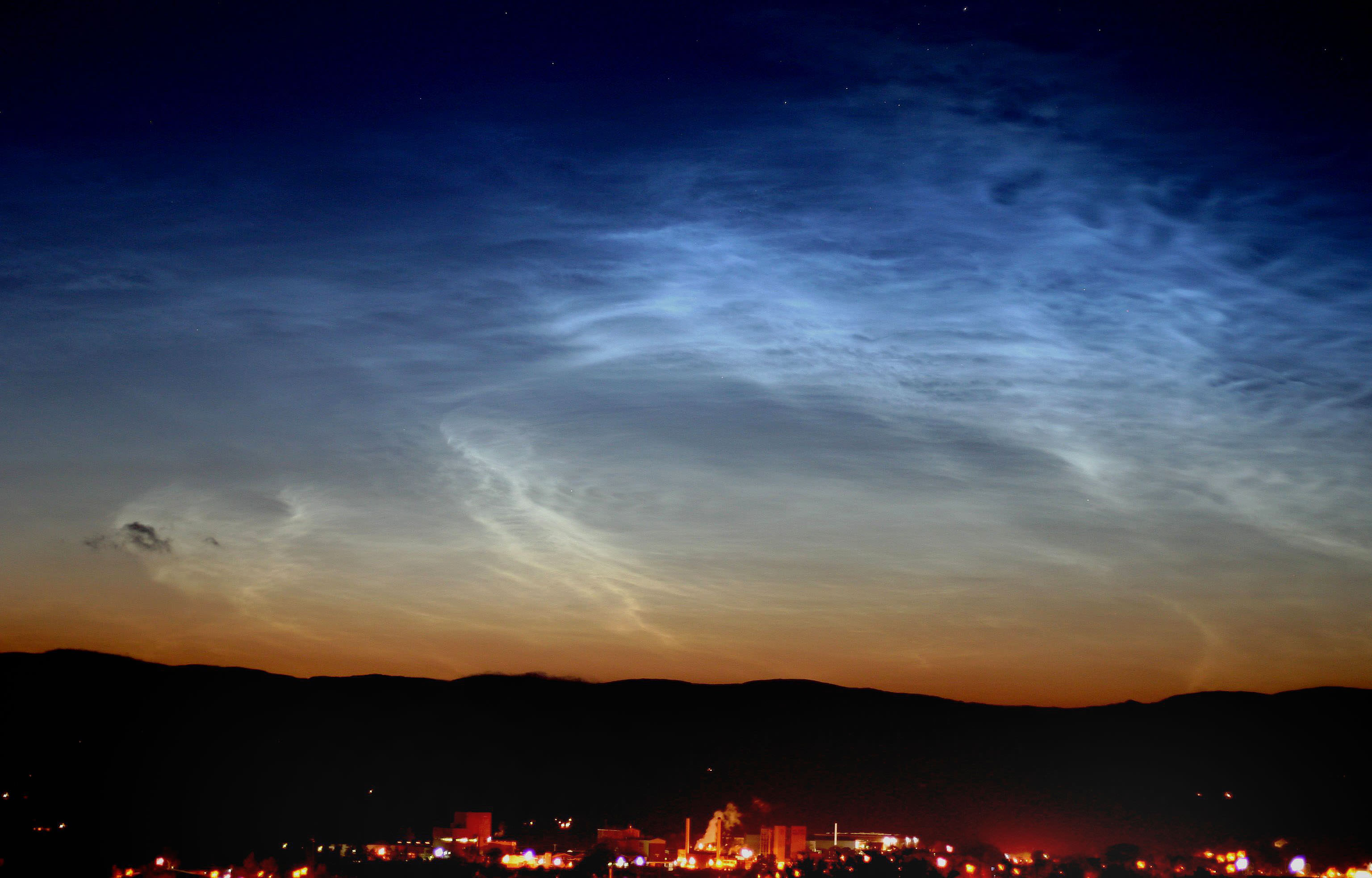
Spaceweather.com has started posting daily noctilucent cloud imagery from the AIM spacecraft (see lower left side of homepage): http://www.spaceweather.com/